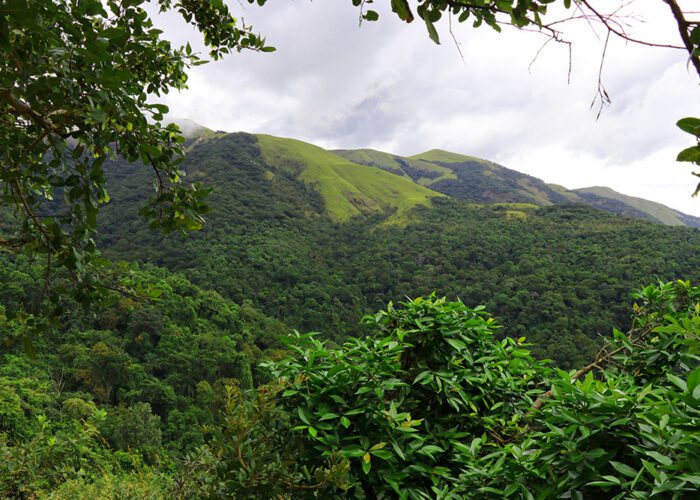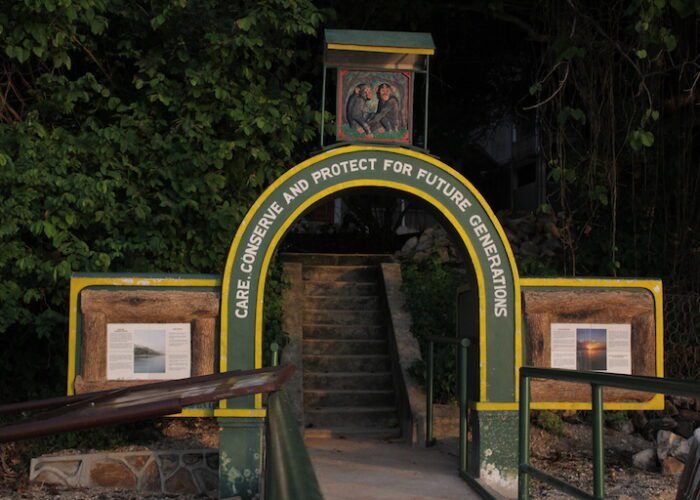Gombe National Park: The Experience
Situated on the wild shores of Lake Tanganyika, Gombe Stream is an untamed place of lush forests and clear lake views. Hiking and swimming are also popular activities here, once the day’s expedition to see the chimpanzees is over. The park’s narrow, steep valleys are carpeted by evergreen rainforests that give way to grass-topped ridges and alpine bamboo stands, are home to two kinds of acrobatic colobus monkeys, along with giant kingfishers, crowned eagles, bushpigs, trumpeter hornbills, and more than 50 other wild species. Snorkelers may enjoy the adjoining lake, which holds almost 100 kinds of brightly-colored cichlid fish.
The main attraction of Gombe Stream is clearly the families of chimpanzee that live protected within the park’s boundaries. Guided walks that take visitors deep into the forest to observe and sit with the extraordinary primates for an entire morning are available — one that is the highlight of many visitors’ trips to Africa and an incredible experience. Besides chimpanzees, other primates living within Gombe Stream include beachcomber olive baboons, red-tailed monkeys, blue monkeys, red colobus, and vervet monkeys. Blue monkeys and red-tailed monkeys have also been known to hybridize in the area. There are occasional hippopotami, leopards, and 11 species of snakes. The park is also home to bush pigs and over 200 bird species.
Gombe National Park: Birdlife
Gombe Stream has about 200 bird species listed. Most of them are forest birds, which are quite difficult to spot. Particularly since walking in the forest unguided is not allowed and the guided walks are focused on chimpanzees. The lakeshore is a good place to see fish eagles and palmnut vultures perched in the palm trees. Peter’s twinspot, a normally elusive forest bird, is quite tame and easily spotted in the camp. Migratory birds are present from November to April.
The birdlife in Gombe Stream is good year-round, but at its best from November to April when the migratory birds from Europe and northern Africa are present. At this time, many resident bird species are nesting and are in breeding plumage. From March to April the rains can make birding difficult because forest trails become slippery. Chimp trekking is better in the Dry season, from June to October, since they are easier to find.



